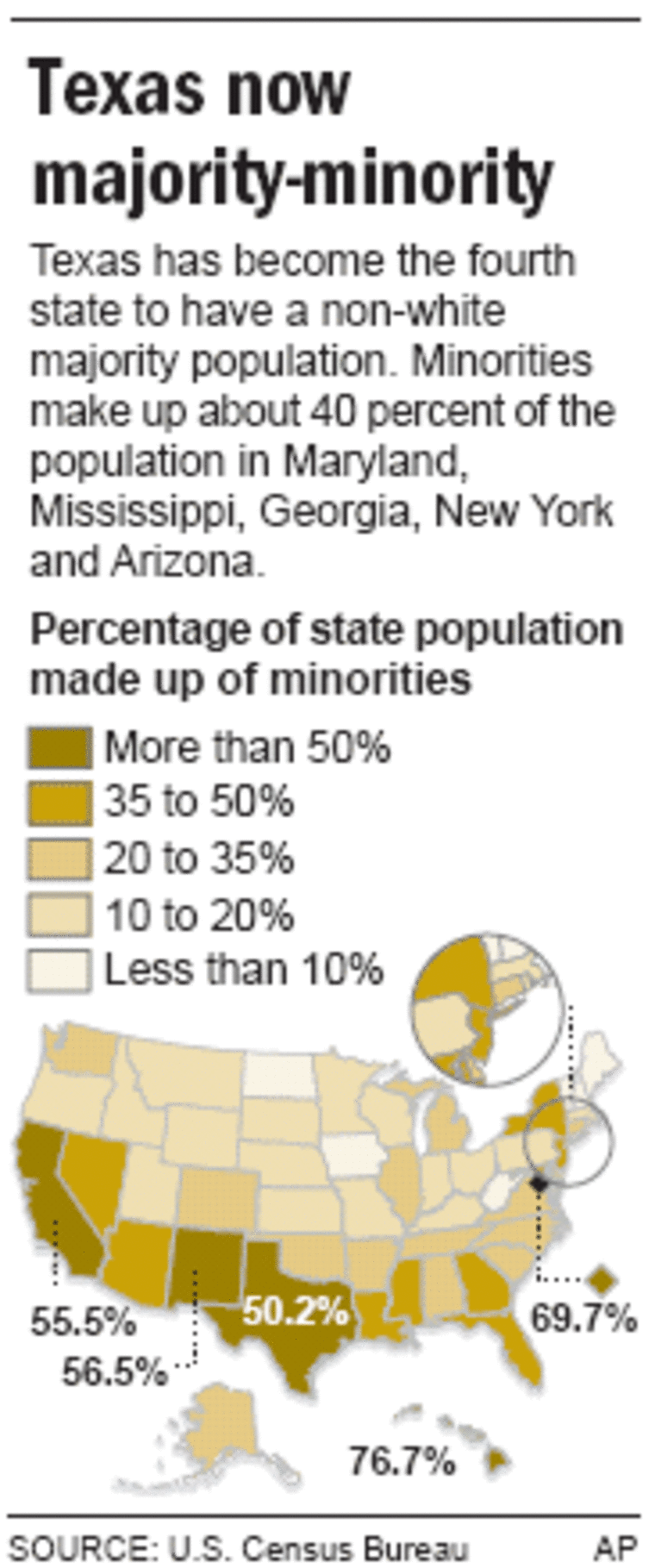Texas has become the fourth state to have a non-white majority population, the U.S. Census Bureau said Thursday, a trend driven by a surging number of Hispanics moving to the state.
According to the population estimates based on the 2000 Census, about 50.2 percent of Texans are now minorities. In the 2000 Census, minorities made up about 47 percent of the population in the second-largest state.
Texas joins California, New Mexico and Hawaii as states with majority-minority populations — with Hispanics the largest group in every state but Hawaii, where it is Asian-Americans.
Five other states — Maryland, Mississippi, Georgia, New York and Arizona — aren’t far behind, with about 40 percent minorities.
Public policy analysts said these states and the country as a whole need to bring minority education and professional achievement to the levels of whites. Otherwise, these areas risk becoming poorer and less competitive.

William Frey, a demographer at the Brookings Institution in Washington, D.C., said lawmakers need to start with immigration reform, while striving to bring minorities’ education and salary levels in line with Anglos.
“Immigration is good for the United States ... it’s important for us to keep our doors open, but we need to keep an eye on the people coming in,” Frey said. “While initially it will be a state problem, eventually it will be a national issue, and education is the best way to deal with it.”
Complications from the cultural shift aren’t likely to be exclusive to states that already have majority-minority populations, Frey said.
‘Pervasive pattern’
Nevada, for instance, has seen a massive influx of minorities in the last 15 years, reducing the percentage of Anglos since the 1990s from nearly 80 percent to about 60 percent. Such a rapid shift is likely to cause growing pains that include trying to balance the needs of a bigger and younger minority community with an aging Anglo community, Frey said.
“That’s the kind of state that is going to have to deal with quick transition,” Frey said.
Though some areas may never see this shift, the country as a whole is expected to continue the trend first noticed more than a decade ago.
The nation should be more than half minorities by 2050, said Steve Murdock, a demographer at the University of Texas at San Antonio.
“If you look in the 1990s, in every one of the 50 states, non-Anglo Hispanic populations grew faster than Anglo populations,” Murdock said. “It’s a very pervasive pattern.”